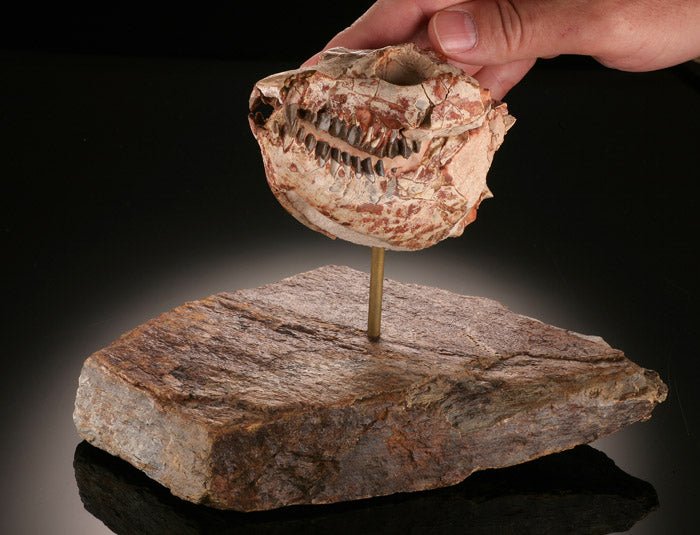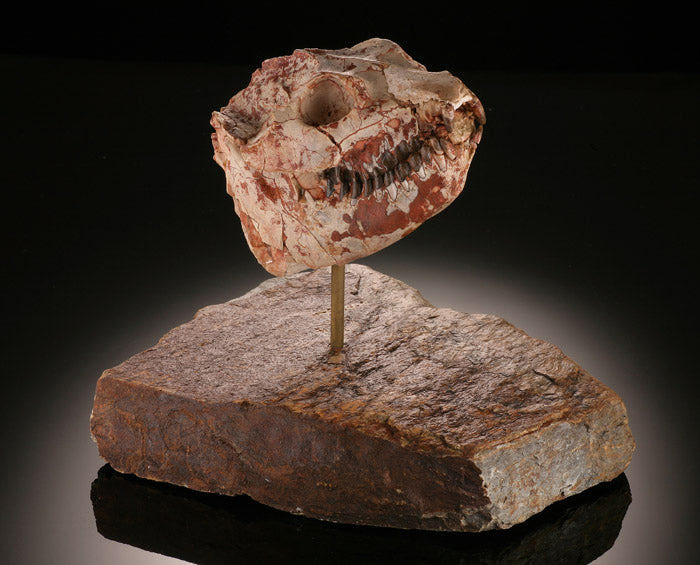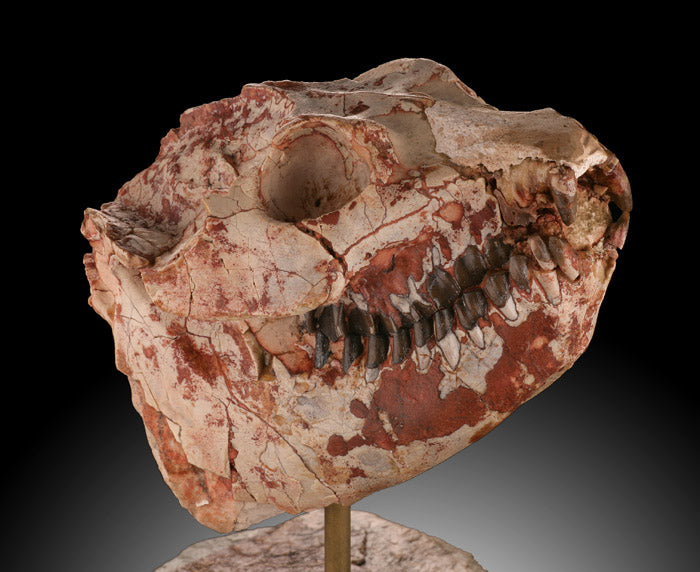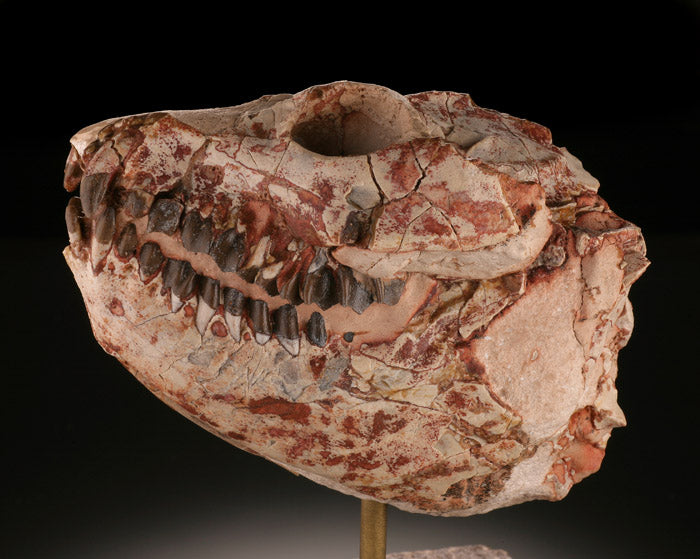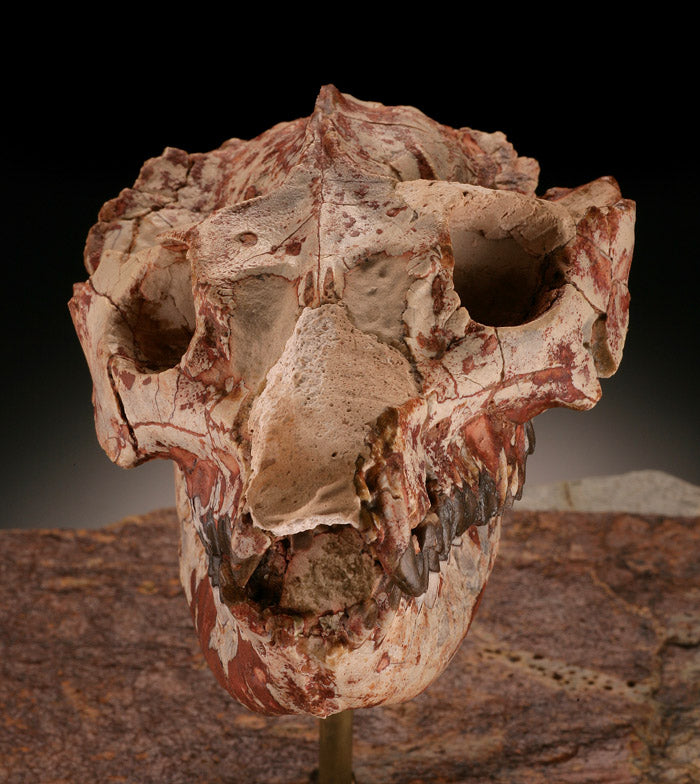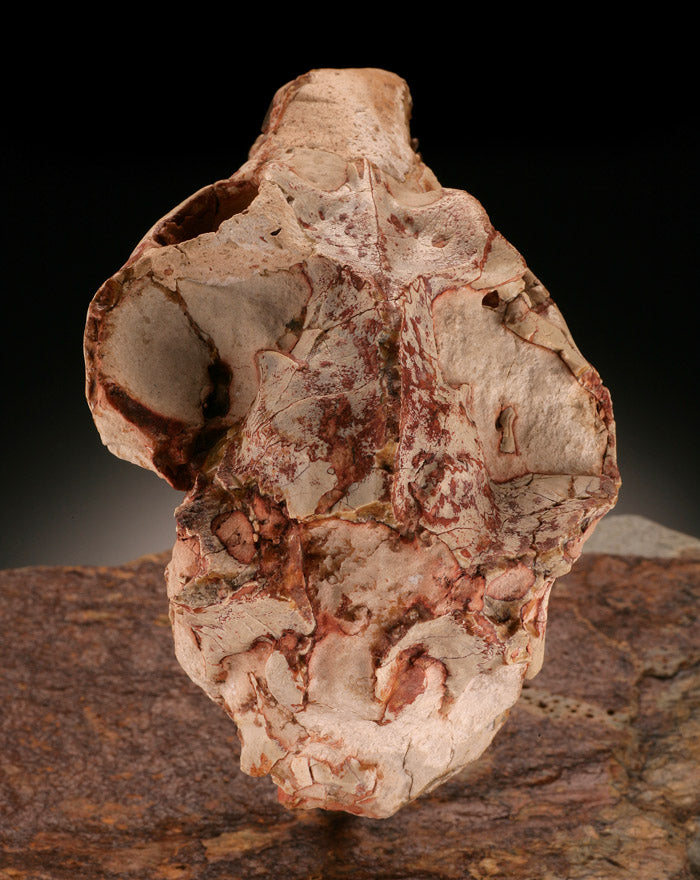





More Information
Oreodonts were a family of cud-chewing plant-eater with a short face and tusk-like canine teeth. Some of the better known forms were generally hog-like, and the group was once thought to be related to pigs, peccaries and their ancestors, but recent work indicates they were more closely related to camels. Most Oreodonts were sheep-sized, though some genera grew to the size of cattle. Oreodonts have a unique place in the evolution of ruminant teeth and with peccary-like attributes.They were heavy bodied, with short four-toed hooves. Unlike any modern ruminant, they had long tails. Oreodants first appeared some 50 million years ago during the warm Eocene and were widely prevalent during the Oligocene in the grasslands, prairies or savannas of what is now the North American badlands. Oreodonts were widespread in North America during the Oligocene and Miocene, but they mysteriously disappeared approximately 4 million years ago.
Lepiauchenia was the smallest of the Oreodont family. It was long hypothesized that Lepiauchenia was an aquatic, or semi-aquatic animal, due to the position of the animals's eyes & nostrils. However, fossils of the animal have never been found in floodplain deposits or river channels. They have only been found in sand dune areas, suggest that Lepiauchenia was actually a desert anaimal.

